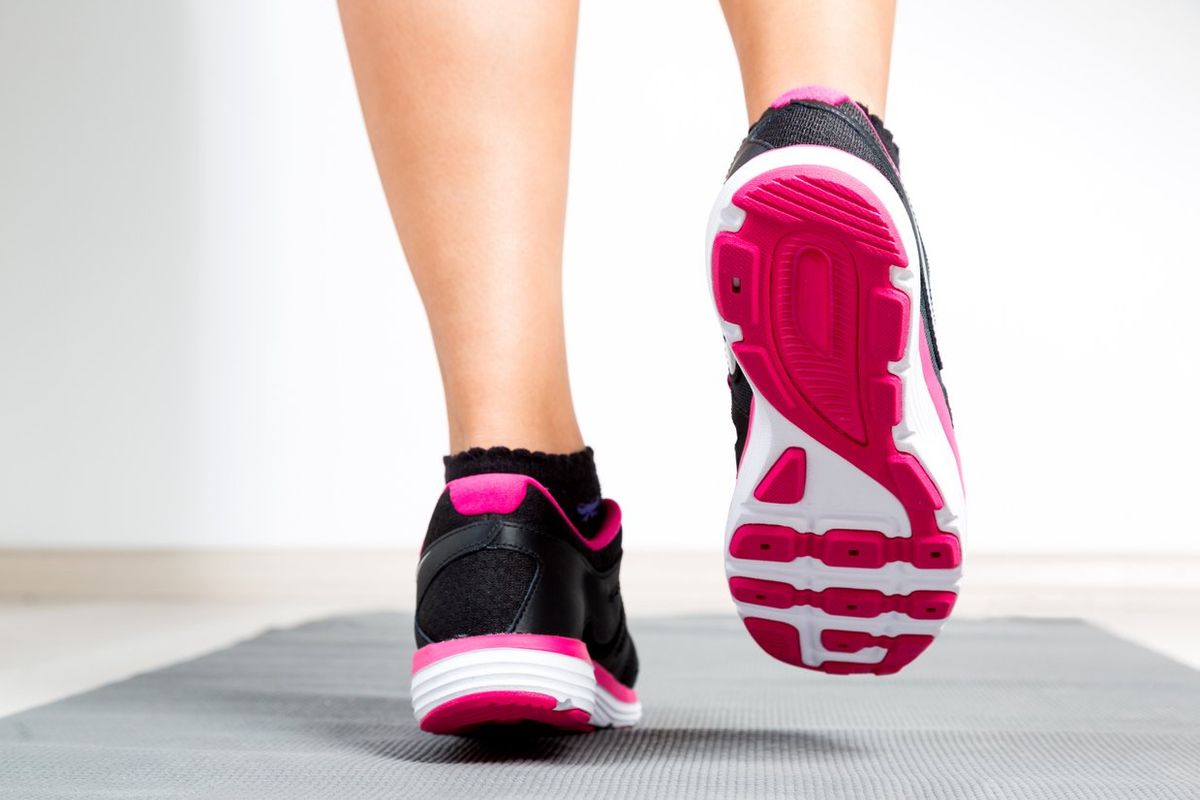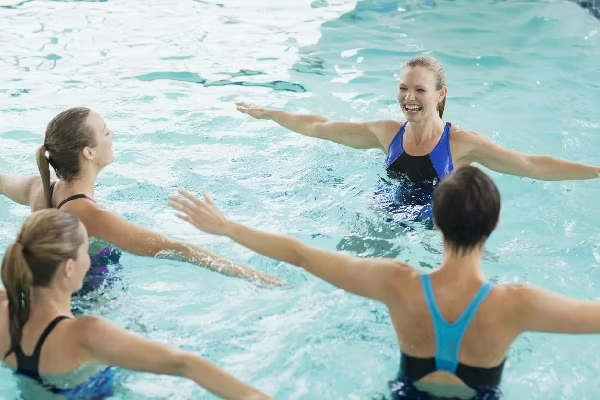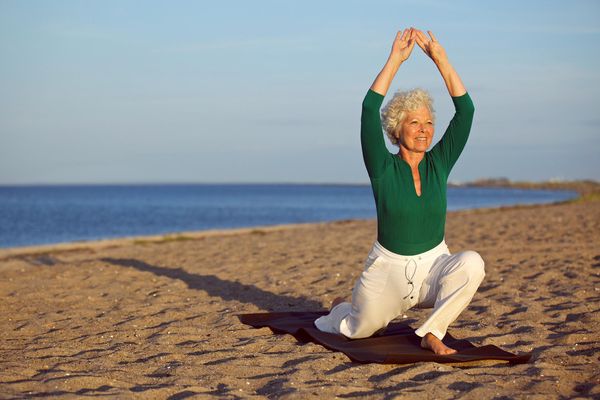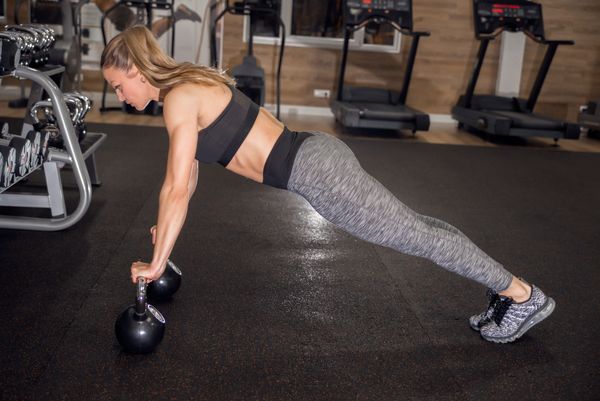Yes, indeed, just as soon as the weather cooperates, you're going to start (or get back into) taking regular walks to improve your health and boost your spirits.
All you need to put your plan into action is for the icy winter storms, or torrents of spring rain, to go away, right? Then all will be well, at least for a couple months, until summer's wilting heat and humidity arrive.
Maybe bad weather isn't the problem. You could be having difficulty finding time to walk outside because your job schedule has changed or home life demands have increased. Perhaps there are no sidewalks, trails or safe pedestrian areas near your home or work.
The solution: take your walking program indoors. You'll avoid weather interruptions and other challenges to regular exercising. Eliminating those stumbling blocks will help you maintain consistency and get closer to achieving the recommended 30 minutes of moderate-intensity physical activity on most days.
Walk anywhere, feel better
Although "location, location, location" is the watchword of success in real estate, it doesn't matter for healthy walking. When you walk at a comfortably quick pace inside an office building, school, fitness center, shopping center or your own home (you'll learn how in a minute!), you get the same benefits as when you walk outdoors.
"Take a look at wherever your setting is and ask, 'How can I be active in this setting?'" says Brigid Sanner, marketing and communications director for Active for Life®, a national research project on fitness in midlife funded by a grant from the Robert Wood Johnson Foundation.
There's good reason to get moving. Moderate-intensity physical activity, such as walking, reduces women's overall risk of death from all causes. Walking also lowers your risk of developing Type 2 diabetes, coronary heart disease and breast cancer.
What about weight loss? In combination with diet, walking can take off excess pounds while also building your cardio-respiratory fitness. Even for obese individuals who don't attain their ideal weight, such activity—when done regularly—reduces the risk of health decline.
So many places, so little time
When locations are convenient, indoor walking fits easily into any schedule. "People can take a walking break during the day," says Kit Keller, an organizer for the advocacy group Wisconsin Walks. "The trend is toward collaboration so that public buildings, schools and businesses can be opened for greater good health uses." A county technical college has connected buildings, which employees and students use for exercise walking, Ms. Keller says, while some local governments maintain community indoor tracks to promote walking in all seasons.
In many regions, schools and colleges open their indoor tracks and other facilities to the public. The local recreation department in Wheatland, NY, encourages residents to walk the hallways at the Wheatland Chili High School from 4 p.m. to 9 p.m. on weekdays. Seven times around the halls equals one mile, according to town recreation director Diane Jennings, who says the program is very popular.
Employers are providing more opportunities for indoor walking. Increasing physical activity means healthier workers. A.G. Edwards & Sons, Inc., financial consultants, has a 1/3-mile track inside the firm's corporate headquarters in St. Louis that's available to all employees—24 hours a day, seven days a week.
Fitness centers and gyms have treadmills and sometimes tracks for indoor walking. These places usually offer televisions to watch or music to listen to while you walk, but membership fees can be costly and the hours of operation might not match your schedule.
You may find there's simply no place like home for easy, comfortable, inexpensive and time-saving exercise. "If you have a large house, you can get a lot of walking going from room to room. [In smaller houses and apartments] you can also march in place while watching TV," says James O. Hill, PhD, obesity researcher at the University of Colorado Health Sciences Center, and co-founder and chair of America on the Move, a national program that helps people and communities achieve healthy changes.
To make your in-home walks interesting and fun, check the library, video store or online for walking DVDs and tapes. When you pop these in, you get pace-setting music, advice on technique and timed walk routines with a variety of movements. Walking in your house is free, but you can also buy a home treadmill machine for about $500 and up.
Marching the mall
If you can resist the smell of warm cinnamon buns wafting through the air, you might enjoy mall walking. Many enclosed shopping centers open early just for walkers and some stay open a bit later for the same reason.
"We have walkers all day long, all times of the year," says Betsy Lackey, general manager of the Adrian Mall in Adrian, MI. She describes the regulars as ranging from "people with baby carriages to the very elderly." Two loops around the mall equals one mile, she adds.
Malls attract walkers because the centers are temperature-controlled and have smooth floors, filtered air, security, bathrooms, easy parking and—yes—a place to get coffee or a snack afterwards. Those amenities might explain why research shows that, compared to men, women walk faster in mall settings than on traditional tracks. Some malls have organized walking clubs, although many mall walkers form their own social networks without the management's help.
Tips on indoor walking
- Add extra indoor walking opportunities. When you go to the supermarket, walk around the outer aisles of the store first before you begin shopping, advises America on the Move. Do the same at warehouse clubs or giant discount stores. Then walk up and down each aisle. At work, walk to speak with co-workers instead of sending email.
- Use a pedometer. These clip-on step counters help encourage you to walk. Keep a log of how many steps you're taking daily. Increase gradually.
- Don't forget the stairs! Vary your walking workout by climbing the stairs at home or work. Even short amounts of extra stair-climbing improve cardiovascular health. Start out by adding just one or two extra trips up the stairs each day, then increase. Walk up escalators instead of standing and riding. Exercise at lunchtime with a friend by walking the stairwells at work.
- Practice inefficiency. Ms. Sanner advises setting aside the TV remote control and walking to change channels. "Take one thing up the steps at a time," she says. "Make four trips instead of one." She tells how a woman in the Active for Life® program increased her indoor walking by taking one piece of laundry out of the clothes dryer, then walking it into the living room where she did her folding. The woman then returned to the dryer for the next piece of laundry, and so on.
- Walk while you talk. Use a portable phone or wireless headset and walk around the house as you carry on conversations.
- Call the mall. Check with the management office at your local mall to find out whether the shopping center opens early, or stays open late, for walkers. If you have a choice of malls, pick one with wide halls so you can move briskly even when shoppers are there.







